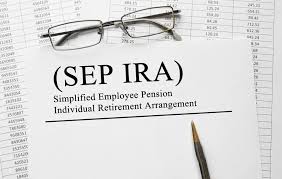If you’re a TPA and you’re not talking to your small business clients about SEP-IRAs, you’re missing the plot. But if you’re only talking about SEP-IRAs, you’re missing the opportunity.
I’ve always said that plan providers, especially TPAs, need to be more than form-fillers. You’re supposed to be consultants, strategists, educators. And when it comes to SEP-IRAs, too many of you are stuck in default mode: “Oh, they’re small. They can’t afford a 401(k). Just go with the SEP.”
Let me be blunt. That kind of thinking is lazy. And it’s bad for business, for yours and for your clients’.
The Case For SEP-IRAs (Yes, There Is One)
I get it. SEP-IRAs are easy. No Form 5500. No discrimination testing. No complicated eligibility rules. You write a check and move on. For sole props or tiny shops with no employees, they’re often a great fit. They let high-income earners sock away up to 25% of compensation (capped at $69,000 in 2024), without the administrative lift of a qualified plan.
As a gateway, SEP-IRAs make sense. They’re the training wheels of employer-sponsored retirement plans. But the problem is too many employers, and too many plan providers—never take the training wheels off.
Here’s the Rub: Employees Change the Equation
If your client has employees, a SEP-IRA starts to make a lot less sense. Why? Because every single eligible employee has to receive the same percentage contribution. There’s no flexibility. No favoring owners. No incentive structure. You’re giving away benefits like Oprah: “You get 25%! And YOU get 25%!”
Think about that. In a SEP, there’s no matching, no profit-sharing tiers, no vesting schedules. It’s one-size-fits-all, which sounds fair—until the business owner realizes they’re writing fat checks to every employee without any tools to retain or reward their top people.
Compare that with a 401(k)—especially one designed by a smart TPA. Now you’ve got real flexibility:
· Matching formulas that drive participation.
· Profit-sharing allocations that favor older, higher-compensated owners.
· Vesting schedules that reward loyalty.
· Automatic enrollment, Roth options, safe harbor designs—the list goes on.
Yes, there’s more work. But that’s what you’re here for.
Your Job Is to Look Around the Corner
Here’s where TPAs need to step up. Don’t just take the easy sale. If your client has more than one employee, or plans to hire more, the SEP-IRA is a temporary fix at best, and a costly mistake at worst.
Your value is not in processing plan documents. Your value is in showing clients how to maximize tax efficiency, build wealth, and incentivize talent. You don’t do that by rubber-stamping SEP-IRAs every time a CPA calls.
And speaking of CPAs, God bless ’em, but many are still stuck in the “SEP is simple, SEP is safe” mindset. That’s your moment. That’s your chance to be the expert in the room. Educate the CPA. Educate the client. Show them the numbers. Show them what a cross-tested 401(k) design could do. Show them how a solo 401(k) could outperform a SEP for owner-only plans with side-business income. Just show up.
A TPA’s Takeaway
If you’re serious about growing your practice and helping clients make smart decisions, you’ve got to move beyond “easy.” SEP-IRAs are fine, but they are not the answer for everyone. In fact, they’re often a sign that no one’s asking the hard questions.
So ask them.
Ask if the employer is looking to reward and retain employees. Ask if they want more control over contributions. Ask what their growth plans are. And if they say “I don’t know,” good—that’s your opening.
The SEP-IRA is not your enemy. But it’s not your finish line either. It’s a tool. Use it wisely. Then upgrade the client when the time is right.
Because you’re not just a TPA. You’re the architect of the retirement strategy. And every architect knows: the foundation matters, but the real magic is in the design.







